Listen to the interview with Sawsan Jaber (transcript):
Sponsored by Fearless Schools and Google’s Applied Digital Skills
One November morning in 2015, Sawsan Jaber was in her suburban Illinois classroom preparing for a day of teaching. As an Palestinian-American teacher in a district with an overwhelmingly white teaching staff, Jaber already felt out of place among her colleagues; that feeling was underscored by what happened next. An ISIS bombing had just struck Paris the day before, which prompted another teacher to stop by Jaber’s room that morning to ask, “How do you feel about what your people did in France yesterday?”
That moment—the insensitivity and ignorance of that question—changed the direction of Jaber’s career. Although she was planning to pursue a Ph.D. in English, she could no longer ignore the urge to use her own experiences to look more deeply into whether Arab-American students feel a sense of belonging in schools. Her district had seen a massive growth in its population of Arab students, but had taken no deliberate steps to learn about what unique needs they might have or how to meet them. Those students became the focus of her dissertation.
Every student deserves to go to a school where they feel seen and included, where their academic and emotional needs are met, and where they can proudly share and be accepted for their whole selves. Because this is not the reality in most schools, equity work is still urgently needed. Here on this site we have turned our attention many times to issues of equity and social justice in education, but none of that attention has been given to struggles that are specific to Arab-American students.
While most of the approaches we’ve explored for making our classrooms more inclusive for all students would by default improve the climate for Arab-American students as well, there are some ways that this population gets excluded in U.S. schools that are unique to them. How this exclusion manifests itself might not be readily observable to most teachers, unless they know what to look for and have a sense for what is going on in the minds and hearts of these students.
If they did know what to look for, they’d see what Dr. Jaber found in her Ph.D. studies, a dynamic in our schools that ranges from outright discrimination of Arab-American students to a more subtle but equally powerful form of marginalization, one that causes students to hide parts of their identities in order to fit in, that makes them feel invisible and conspicuous at the same time, and that conceals their failure to thrive, even when they look like they’re navigating school successfully.
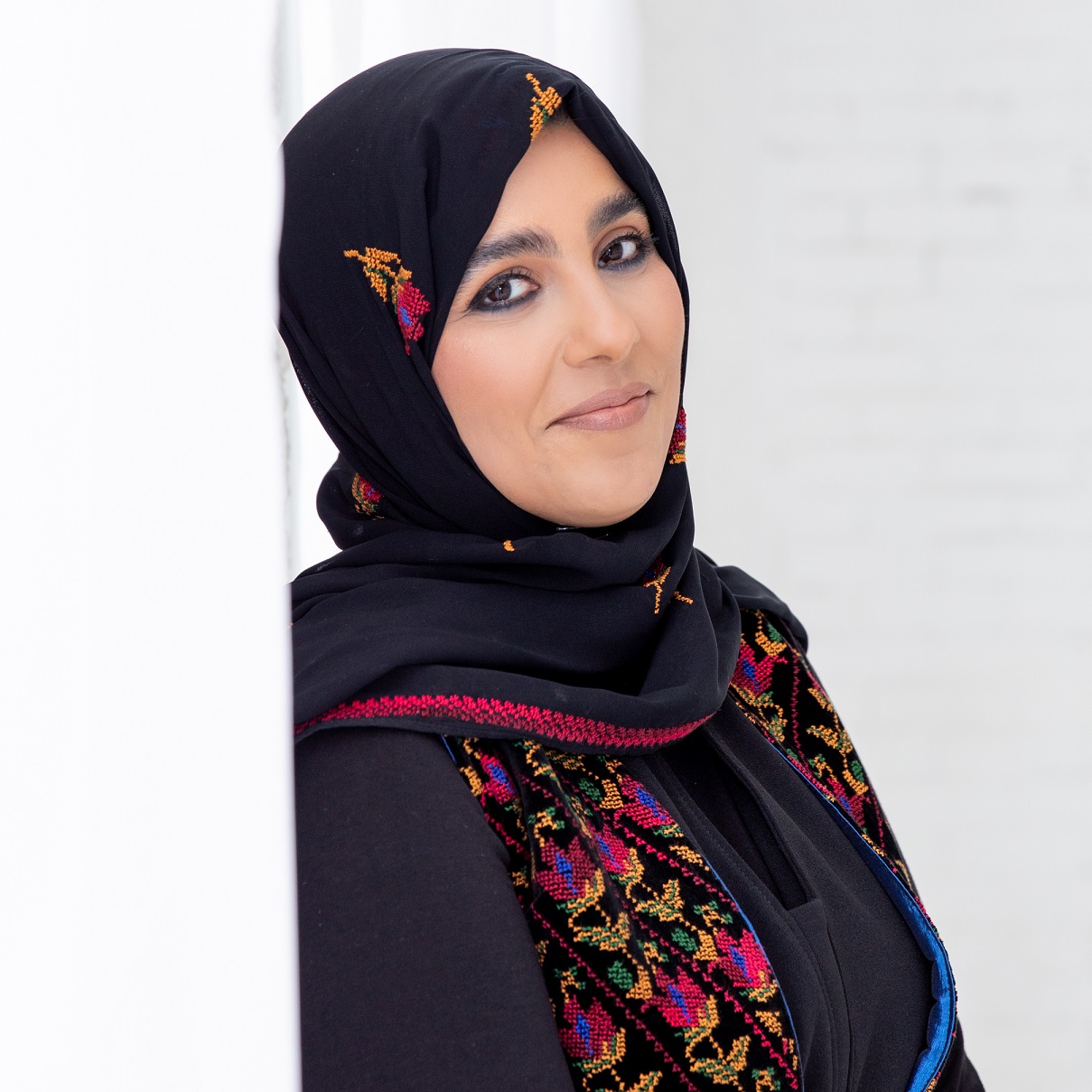
Whether you teach in a school with only a few Arab students or a substantial Arab student population, there are things you can do to make things better for these students.
This was the focus of my conversation with Dr. Jaber on the podcast, which you can listen to in its entirety above, or read the transcript, also linked above. What follows is a summary of the main takeaways from our conversation.
What do we mean by “Arab-American?”
The first step in creating a foundation of support is identification, knowing which students are experiencing this particular kind of marginalization. Is it only students from countries where Arabic is spoken? Muslim students? Both?
The answer lies largely in how students are perceived by their peers.
“The experiences of Arab students and Muslim students are often very, very similar in American public schools.” Jaber explains. “So although there are two different populations and sometimes there are intersections, it’s not always the case. Arab Americans are Arabs who come from 26 different Arab-speaking countries. Islam is a faith, so you have Arabs who follow all different types of faiths. If you look at Palestine, for example, there’s a huge Christian population that is also considered Arab. But you can also be Muslim and be from anywhere; you have Muslims from all over the world and in all colors and who come from all different backgrounds. So you can be an Arab Muslim.”
Attempting to narrow down a definition highlights one root of the problem: Many people in the U.S. have limited knowledge about the different cultures that make up the Arab world, so their view is oversimplified. Whether a student is from an Arabic-speaking country or one that is mistaken as such, like Afghanistan, the experience for that student in a U.S. school can be very similar, especially in the wake of the 9/11 terror attacks of 2001.
“All Muslims are put under the umbrella of this extremist, rigid, violent faith,” Jaber says, “and that’s not Islamic at all….this monolithic version of Arabs and Muslims (has) been created through the media and through current events that have been distorted.”
What is the climate like for these students in U.S. schools?
In order to thrive academically, students need to feel a secure sense of belonging at school (St-Amand et al, 2017). Educators can determine if this is happening through four markers: positive emotions, positive relationships with peers and teachers, willingness to get involved in group activities, and harmonization, where students adapt to situations and people around them in order to fit in.
At first, Jaber saw all of these markers in the students she observed. “Some of them are top tier, doing excellent, straight A’s, involved in extracurricular activities. They seem to have some type of social circle. They have great relationships with their teachers. Teachers aren’t complaining that these kids are difficult or unmanageable. So they check all of these boxes.”
When she interviewed the students, however, a different picture emerged. “The things they revealed were very, very contrary to what you would see on the outside. Their stories show that they didn’t feel included at all.”
She found that students fit into one of three categories:
- They assimilate to fit in. These students bring a change of clothes to school, give themselves more American-sounding nicknames, or deny cultural markers, like sitting at the regular lunch table while fasting for Ramadan, rather than at a designated table for students who were fasting. These choices create a lot of dissonance between students and their parents, who want them to stay aligned with their religion and maintain a sense of pride in their cultural identity.
- They immerse themselves in extracurriculars and sports. Finding a common hobby is a way for some students to develop camaraderie with other, non-Arab students. But the friendships are largely superficial. “These kids were very intentional to only share what they had in common, which was the sport. Once they got deeper into identities and shared experiences, they had nothing in common.” When Jaber asked students if the relationships continued past the end of the activity, the end of the season, “The answer was almost always no.”
- They silo themselves. In a process Banks (2017) calls failed citizenship, these students retreat from the larger population and keep to themselves, focusing on schoolwork and making no attempt to integrate themselves into the culture. In her interviews with these students, Jaber says “a lot of things I heard were like They’re never going to accept us, and I’m not willing to compromise who I am.”
“All three of those scenarios are obviously really unhealthy and go against what we believe to be best practice and kind of a healthy culture for students, whether it’s a classroom or an entire school,” Jaber says.
When working with Palestinian students, Jaber noticed an especially acute sense of disconnection. “They are considered by default anti-Semitic and anti-American by claiming their Palestinian identity,” she says. “And one of the biggest traumas for Palestinian students who live generational trauma through their parents’ experiences already is the idea that I can’t claim this part of myself. When I look at the map, I don’t see that part of myself. When I’m reading books in global studies classes or in literature classes, I’m always being portrayed as a terrorist, or I’m always being portrayed as somebody who cannot coexist with other people.”
Imagining Something Better
So what would it look like if a school environment was a nurturing place where Arab-American students experienced a more authentic sense of belonging?
“I would imagine it would look the same for any student who comes from any type of marginalized background,” Jaber begins, “—or even not necessarily from a marginalized background. If I have a handful of white students in a primarily Black school, for example, what would it look like for those white students to feel like they belong in that environment as well?”
Some of the features we’d notice in a school that made these students feel included are:
- Ease in using first language. “If they have a first language,” Jaber says, “they’re embracing that first language in writing.”
- Willingness to share cultural identifiers. “They share things about themselves that we wouldn’t know otherwise,” Jaber says. “And they’re offering to do that. It’s not best practice to go to a student and say, ‘Hey, why don’t you tell us about Ramadan,’ for example. But it’s great when you have a kid who’s writing an assignment and they’re willing to share about Ramadan, because it’s something that they decide is important enough for them to share, and they feel safe enough to share it.”
- Representation in materials. “The school is creating what Rudine Sims Bishop calls mirrors, windows, and sliding glass doors. So intentionally in activities, in classrooms, in curriculum, (these students) see themselves represented accurately.”
- Representation in personnel. “They see a representation of themselves in school—whether it’s administration or teachers—people who understand them and look like them that can be role models and safe spaces.”
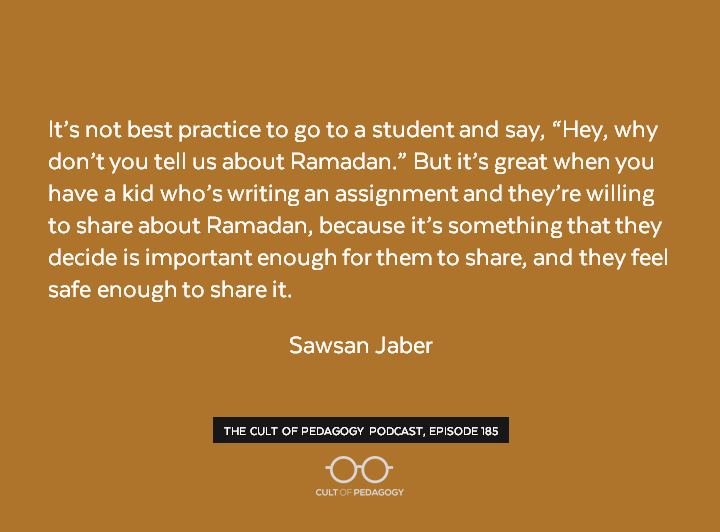
The thread that runs through all of these features is that a student’s cultural identity is a built-in, organic part of the school experience, creating an environment in which the student is no longer an “other.”
“It’s about kids feeling that your teacher thinks that who you are is important enough for them to be doing the work to really immerse themselves in getting to know who you are,” Jaber says.
Steps Teachers Can Take Toward a More Inclusive Climate
Before we get into action steps, it’s important to note that although our examples are provided through the lens of supporting Arab-American students, they apply to all students and their cultural backgrounds.
They will also benefit all students, regardless of their identities.
“Whether (your school has) one student, 10 students or even if you have no Arab students, having these conversations is really important,” Jaber explains. “Because eventually these kids are going to move out into the real world and interact with all different types of people. They’re going to be (part of) decision-making bodies. They’re going to be in political positions. They’re going to be doctors who are going to have Arab patients. They’re going to have interactions with people who might be from this background and other backgrounds. And so one of the things that we have to do for all students is really arm them with the tools to be able to recognize, interrogate, appreciate people from other backgrounds, whatever that looks like.”
Know Your Students and Their Families
Getting to know students as individuals and learning about their unique, specific cultures will go a long way toward making them feel seen and included. “It’s really important if you’re teaching populations of Arab students or teaching about Arab students to consider the fact that the Arab countries are so different,” Jaber says. “Anybody who immerses themselves in the Arab culture will realize how beautiful and how rich and how diverse, and how much it has to offer.”
From the very start of the school year, instead of focusing primarily on establishing protocols, prioritize relationships. “Our first two weeks of school in my classroom,” Jaber says, “we always start with really interrogating positionality, sharing how we identify, sharing real stories that really impact who we are, like childhood stories of—here are some things that happened to me that really shape how I view the world. I ask the students, How do you see yourself? How does the world see you? And how do those things impact how you view and see the world?”
This process can happen through class discussions, through journals, or in one-on-one conversations. It’s essential, Jaber says, for teachers to set the tone by sharing their own stories with students. When she does this, “I am teaching somebody who has never heard about Palestine or Palestinians or refugees or understood refugee experiences by counter-storytelling. Telling your story, and not having somebody else tell your story the way they see it, can change minds and hearts by itself.”
Getting to know your students well should also include building relationships with their families. Making this happen requires intentionality and creativity; just putting out a broad invitation to all parents to participate in events or serve on advisory committees will likely not be enough.
“Even when there’s an all-call, very few parents of color will often come to the table because you have not done a good enough job to make the kids who you interact with on a daily basis feel safe. So the parents definitely aren’t going to come running to the table either. It has to be intentional, and part of the way to do that is to offer parents the tools, classes, universities, workshops, and opportunities like translating things, offering things in the evenings so that parents who have jobs and have to work or have younger kids and can’t afford babysitting come to the table and participate in a lot of ways. If you’re not getting that representation, really interrogating your culture and your environment and asking why.”
Enrich Your Curriculum
In an effort to be culturally responsive, some schools bring in texts that they think are reflective of Arab students’ culture, but that ultimately miss the mark. This happens frequently with Khaled Hosseini’s book, The Kite Runner.
“Hosseini is Afghan,” Jaber explains. “So it’s not even anything that any of these kids, whether Arab or Muslim, can really relate to because it’s an extremist form of Islam. I’m not taking away from his experience and his story, but it definitely is a unique experience and a unique story that many Muslims around the world can’t relate to.”
Instead of adding one or two single-story texts to your curriculum, strive to broaden your existing collection to include a wide variety of stories from many countries. “There’s so many Arab poets that you can bring into the classroom and highlight and have the kids feel that pride in their own language and in their own history, and then feel more comfortable sharing it because they feel like you value it as a teacher.”
This also applies outside the English classroom. “Offer Arabic as a second language,” Jaber suggests. “There’s Arab contributions in science. There’s Arab and Muslim contributions in history in America way before the violent representations in World War II and definitely before 9/11, right? Which is usually where Arab and Muslim history and current events starts and ends. There’s so much more to who we are and our contributions as Americans in this country.”
When it comes to Palestinian students, Jaber says, “I’m not going to get into the complexities of Palestine and Israel and tell anybody what they should think about that in general, but I really think it’s important —because I know we’re not there yet as a country to represent one or the other—to represent, at least represent both. At least bring in the Palestinian perspective. Validate your students’ identities. Let them see themselves and their experiences and their histories represented accurately as well in what you’re teaching in the classroom.”
If you teach history in grades 11 or 12, one excellent resource is the University of Pennsylvania’s Teaching Beyond September 11th curriculum, which Jaber had a hand in creating. The curriculum looks at the 9/11 attacks and their aftermath through a critical and social justice lens.
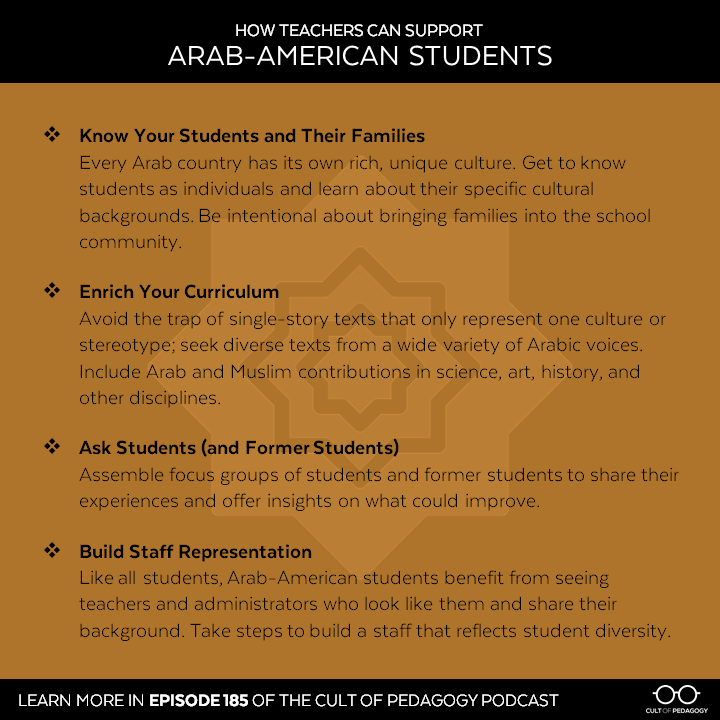
Ask Students (and Former Students)
One of the best ways to learn how to improve the climate for the Arab students in your specific school is to ask them. A believer in the Street Data approach, Jaber suggests that teachers assemble focus groups of students, parents, and former students, who can be an especially rich source of insight.
“Bring the kids who graduated from the school and their parents and ask them, What didn’t work for you? Let’s fix it. You have a resource. Kids are often, when they’re not a part of the system anymore, much more vocal about what didn’t work for them when they were a part of that system.”
When running these focus sessions, invite students who represent different groups. “The kids who were academically doing well and the kids who didn’t do so well academically, the kids who were in the dean’s office every week or every day. Talk to them and ask them what motivated them to act the way they did during school.”
Build Staff Representation
“Just like any other group of students, (Arab-American students) benefit from seeing Arab teachers and administrators in districts where there is a number of Arab students,” Jaber says. Schools with a deep desire to help a diverse student body feel a sense of belonging will take intentional steps to build a faculty that reflects that same diversity.
“You have the power.”
When asked if she had any final thoughts, Jaber wanted to end on a note of optimism and empowerment for teachers.
“We have so much that we can really impact and shape for these kids,” she says. “Sometimes there’s kids who the only reason they come to school is because they need to see you. Teachers sometimes don’t acknowledge or name the power and the impact that they have on shaping students’ lives. Sometimes you’re the hope that they have in a world that just feels so hopeless. Take that power and do something great with it.”
References
Banks, J. A. (2017). Failed citizenship and transformative civic education. Educational Researcher, 46(7). https://doi.org/10.3102%2F0013189X17726741 [PDF]
St-Amand, J., Girard, S., & Smith, J. (2017). Sense of belonging at school: Defining attributes, determinants, and sustaining strategies. IAFOR Journal of Education, 5(2). https://doi.org/10.22492/ije.5.2.05 [PDF]
Join our mailing list and get weekly tips, tools, and inspiration that will make your teaching more effective and fun. You’ll get access to our members-only library of free downloads, including 20 Ways to Cut Your Grading Time in Half, the e-booklet that has helped thousands of teachers save time on grading. Over 50,000 teachers have already joined—come on in.

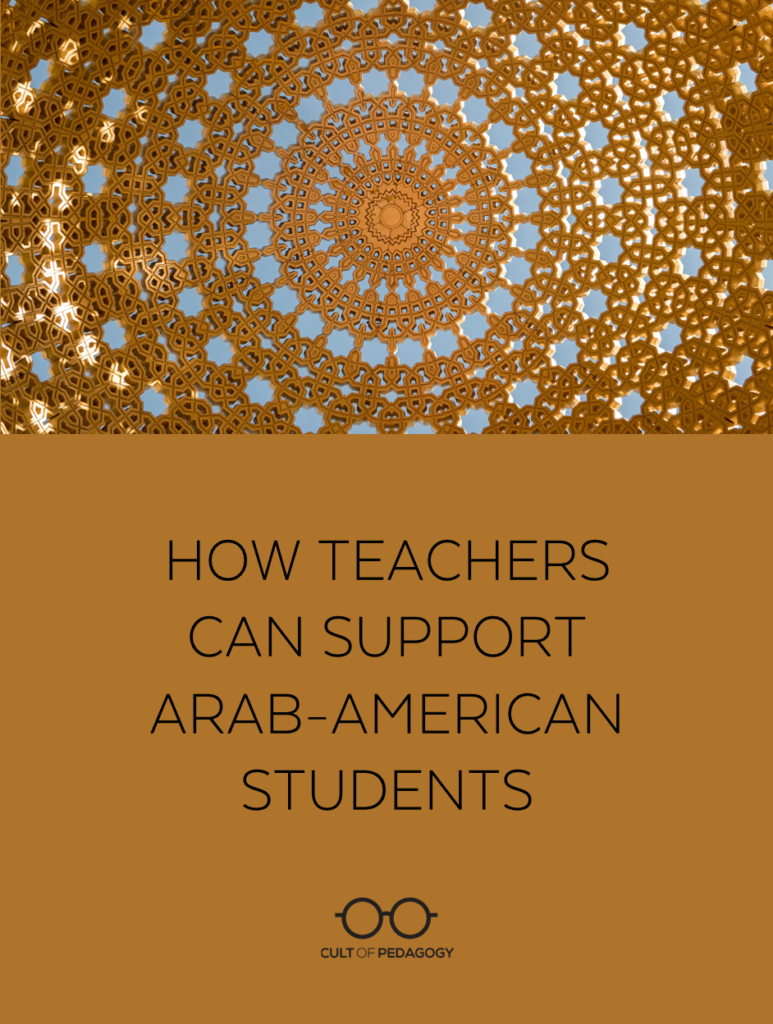



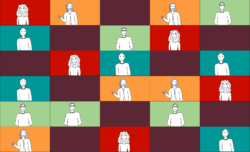
This was a great episode (they are all great), but what motivated me to comment was the synchronicity of this topic dropping within a few weeks of the new Serial podcast on the Trojan Horse Affair which focused on a Pakistani Muslim principal at a majority Muslim school in Birmingham, England. The two podcasts fit together so neatly that you have to listen to both. Thank you, Jennifer! https://www.nytimes.com/interactive/2022/podcasts/trojan-horse-affair.html
Hi James,
So glad you’re enjoying and finding value in our resources! I’ll be sure to share this with Jenn!
Wow! Here I am, a school principal in Dubai, sitting in my office eating a guava reading this! It’s like the complete opposite in our American international school, where our learning community reflects the local neighborhood in terms of demographics. We are 85% Arab, in which 50% of those Arabs are locals–Emirati. There are initiatives from the UAE National Agenda to support and promote Emirati achievement and Islamic values. This reading just shook my world, as I prepare to serve on a DEIJ panel in two weeks at the Teach Middle East Leadership Conference here. Our school Director is Palestinian, and she grew up in Boston before coming to the UAE. I wonder what it would be like for our scholars to read this and hear their wonders and their perceptions, just as I wonder what it would look like to hear all our adult staff and teachers’ voices who are Arab–they teach our Islamic Studies, Arabic and UAE Social Studies courses which are mandatory through the Ministry of Education.
So many thoughts popping in my head before I even grab a cup of coffee, like, “With whom would I like to share this article?
So intriguing!
Thanks for sharing this.
Hi Sharin, thanks for weighing in! It’s great to hear from educators like yourself outside of the United States. Feel free to share your thoughts with us anytime!
I appreciate this article and having helped raise two Arab, Muslim boys right after 9/11 there were many misunderstandings between educators and this population.
I did want to mention that the correct term for people from Afghanistan is Afghan. The money is Afghanis. A lot of people are confused about the correct term.
Pamela, I’m so glad the article rang true for you. Thank you for the correction on the terminology; I have made the change in the post.
We often have so many months that have themes, and one that is not often shown in the spotlight is April being Arab American Heritage month. This month (which in 2022 also overlaps with Ramadan in the lunar calendar) is a time for educators to spotlight their own students’ culture and make them feel seen and heard. To recognize, acknowledge and publicize this brings their culture into the classroom for all peers to share.
Great point, Omar. Arab American Heritage month is a great opportunity to raise awareness about issues facing Arab Americans today.
Hello!
I am so appreciative of ALL of your work. Episode 185 was especially pertinent as I teach in a relatively “undiverse” area. This year one of my learners introduced herself as Palestinian/Jordanian. She is an incredible person, and I want to be able to support her in anyway possible. I discovered and read several books that have been tremendous resources. She and I have such rich, genuine conversations based around the stories.
The books are Unsettled and Golden Girl both by Reem Faruqi
Wishing Upon the Same Stars by Jacquetta Nammar Feldman
I am an amateur podcaster, and so far, I’ve featured Unsettled and Wishing Upon the Same Stars. Even if you don’t listen to the short podcasts, I can’t recommend these books enough. Both authors have been so responsive to my questions.
https://podcasts.apple.com/us/podcast/wonder-world-book-cafe/id1607696687?i=1000552318122
Thank you for introducing us to Sawsan Jaber.
Susan